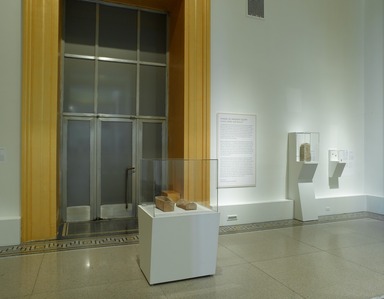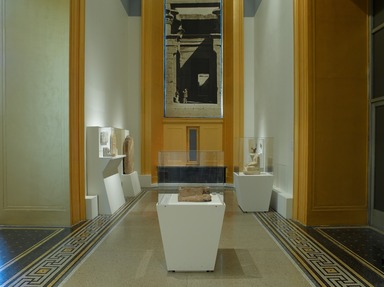

Magic in Ancient Egypt: Image, Word, and Reality, December 22, 2006 through October 18, 2009 (Image: DIG_E2006_Magic_01_PS2.jpg Brooklyn Museum photograph, 2007)

Magic in Ancient Egypt: Image, Word, and Reality, December 22, 2006 through October 18, 2009 (Image: DIG_E2006_Magic_02_PS2.jpg Brooklyn Museum photograph, 2007)

Magic in Ancient Egypt: Image, Word, and Reality, December 22, 2006 through October 18, 2009 (Image: DIG_E2006_Magic_03_PS2.jpg Brooklyn Museum photograph, 2007)
Magic in Ancient Egypt: Image, Word, and Reality
DATES December 22, 2006 through October 18, 2009
ORGANIZING DEPARTMENT
Egyptian, Classical, Ancient Near Eastern Art
RELATED LINKS
Main Exhibition Page
-
Magic in Ancient Egypt: Image, Word, and Reality
Throughout history humans have felt themselves to be confronted by mysterious beings and powers, some seen as good and some as evil, and have related to these forces through religion, science, art, and magic. In our society it is common to relegate magic, which one modern definition calls “the supposed art of influencing the course of events supernaturally,” to the world of illusion and superstition. Nevertheless, superstitions are still powerfully felt throughout the world (including this country) and often reflect beliefs that were once far more widespread and sanctioned by religion. For the ancient Egyptians, there was nodistinction between religion and magic.
Magic was widely used in ancient Egypt, and Egypt’s fame for magic was great. In the early third century A.D., it was written that “Egypt was the mother of magicians.” This was the general opinion in the ancient world, as reflected in the Old Testament, where Pharaoh is attended by magicians who compete with Moses and Aaron in performing marvels such as changing wands into serpents and water into blood. Early opponents of Christianity accused Jesus of having trained as a magician in Egypt and of working his miracles through magic acquired there. In the Talmud it is said that Egypt received nine of the “ten measures of magic that came into the world.”
The ancient Egyptians believed that the manipulation of written words, images, speech, and ritual could influence the world outside the normal parameters of cause and effect by means of what they called Heqa (“Magic”), a divinely created and sanctioned force personified as the eldest son of the solar creator Atum. Deities could use Heqa to sustain the universe—which the Egyptians believed was always threatened by the Nun, the ocean of chaos within which it was created—and for many other purposes. Heqa could also be used by people with the proper training and was a god-given means to help humanity cope with many of life’s problems. Although ancient Egyptians could also employ Heqa for what we might consider evil purposes, Heqa itself was neither good nor bad, but a neutral power that could be put to either use. This concept contrasts greatly with the long-held Western view of magic as evil or satanic in origin.
Richard Fazzini
Head, Brooklyn Museum Mut Expedition
-
October 7, 2006
Ancient Egyptian Magic: Manipulating Image, Word, and Reality, an exhibition of twenty objects from the Brooklyn Museum’s world-famous ancient Egyptian art collection, explores how the Egyptians, known throughout the ancient world for their expertise in magic, addressed the unknown forces of the universe.
In ancient Egypt there was no distinction between religion and magic. The gods could use a divinely created force known as Heqa, personified as the son of the solar creator Atum, to control and sustain the universe. Through the manipulation of written words, images, speech, and ritual, humans could also use Heqa to influence the world and solve problems.
Included in Ancient Egyptian Magic are a relief depicting a son of Ramesses II, Prince Khaemwaset, who became a legendary sage and magician; a bronze of the Goddess Isis (shown holding a divine cobra), considered to have great magical powers; a magical healing stela inspired by myths of Isis healing Horus from scorpion stings and snakebites; and a headrest with images of Bes and Tawaret, deities believed to protect the dead and the living.
The exhibition also examines the close links between magic and medicine, including the idea that a cure could be achieved by swallowing a liquid over which a spell had been recited, and the use of magic after death through such objects as shabtis: funerary figurines created to do any work the gods might demand of the deceased in the afterlife.
Ancient Egyptian Magic: Manipulating Image, Word, and Reality is organized by Richard Fazzini, Curator Emeritus and Head of the Museum’s excavation at the Temple Precinct of the Goddess Mut in Egypt.
View Original




